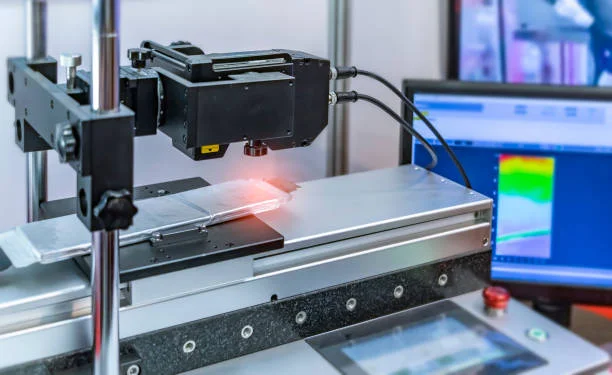Laser marking technology is a non-contact process that uses a highly focused beam of coherent light to create permanent markings on a wide variety of materials. By precisely controlling pulse duration, energy density and focal position, a laser can ablate surface layers (engraving), induce color changes through localized heating (annealing) or modify surface roughness for contrast effects. The result is a crisp, high-contrast code, logo or text that resists abrasion, chemicals and extreme temperatures; ideal for any part that must carry reliable identification throughout its life cycle.
There’s so much more to discover—browse our related posts!
Laser Technologies and Their Applications
Different laser sources excel on different substrates:
- Fiber Lasers (around 1,064 nm): Exceptional for marking metals (stainless steel, aluminum, copper) and high-performance thermoplastics. Fast pulse repetition and high peak power enable deep engraving or bright annealed marks.
- CO₂ Lasers (10.6 µm): Well-suited to organics—wood, leather, paper, glass and many ceramics. They “vaporize” surface layers cleanly without mechanical contact.
- UV Lasers (355 nm): Ultra-short wavelength for minimal heat-affected zone. Perfect for delicate substrates such as medical polymers, silicone wafers or thin-film electronics, where micro-precision and no subsurface damage are critical.
- DPSS Lasers (green or infrared variants): Often used in micro-marking applications where very fine dot spacing (down to 10 µm) is required, such as jewelry engraving or high-density electronics serialization.
Key Advantages of Laser Marking
- Permanence & Durability: Marks withstand solvents, abrasion, UV exposure and extreme temperatures without fading or smearing.
- Sub-Millimeter Precision: Beam spot diameters, in the order of µm, enable high-resolution graphics, micro-text and 2D codes on tiny components.
- High Throughput: Modern galvanometer scanners can mark thousands of parts per hour, with cycle times measured in milliseconds.
- Consumable-Free Operation: No inks, ribbons or chemicals—just the laser source and minimal periodic maintenance.
- Digital Flexibility: Software-driven marking jobs can be changed in seconds (batch numbers, QR codes, logos), enabling fast product changeovers.
Does It Make Sense Switching from Inkjet to Laser? Why?
Yes. While inkjet systems may seem cost-effective initially, they conceal hidden expenses:
- Consumables: Ink cartridges, cleaning fluids, and printhead replacements add recurring costs.
- Downtime: Nozzle clogs, drying times and maintenance interrupt production.
- Durability Issues: Ink can smear or fade under harsh conditions (solvents, high heat).
Laser marking eliminates these drawbacks. The upfront investment is offset by zero consumable spend, near-100% uptime and marks that last the lifetime of the product, driving down total cost of ownership and improving line efficiency.
Laser Marking Top Applications
- Automotive & Aerospace: Traceability on engine blocks, turbine blades and air-frame rivets.
- Medical & Pharmaceutical: Biocompatible marks on surgical tools, implants and sterile packaging.
- Electronics & Semiconductors: Serialization on PCBs, microchips and connectors.
- Jewelry & Luxury Goods: Micro-engraving on precious metals without heat distortion.
- Consumer Products & Packaging: Batch codes, anti-counterfeiting marks on plastics, glass and cardboard.
- Security & Government: Tamper-proof IDs on passports, driver’s licenses and access badges.
Don’t miss out on more great reads—click through our featured posts!







